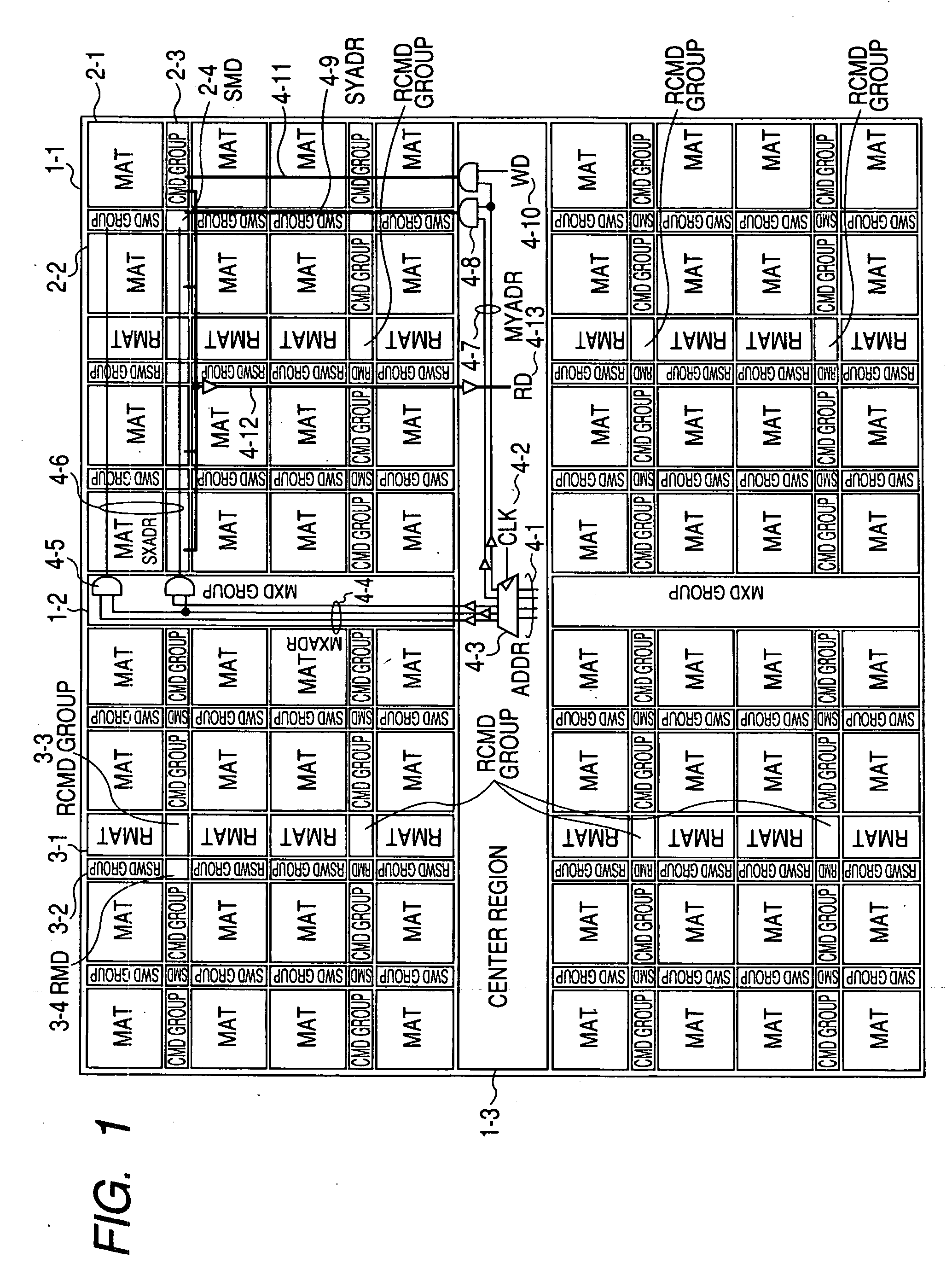Semiconductor memory device
a memory device and semiconductor technology, applied in the field of semiconductor memory devices, can solve the problems of enlargement of the layout area of the memory mat, increase in the number of sense amplifiers and write amplifiers, etc., and achieve the effect of reducing reducing the parasitic capacitance connected to the first common data line, and minimizing the increase in the number of write amplifiers
- Summary
- Abstract
- Description
- Claims
- Application Information
AI Technical Summary
Benefits of technology
Problems solved by technology
Method used
Image
Examples
Embodiment Construction
[0035]FIG. 1 shows an SRAM as an example of a semiconductor memory device according to the present invention. FIG. 2 schematically shows the relation between one of a plurality of memory mats in the SRAM illustrated in FIG. 1 and peripheral circuits of the memory mat.
[0036] An SRAM 1-1 shown in FIG. 1 is, although not limited, formed on a semiconductor substrate such as a single crystal silicon substrate by a known semiconductor integrated circuit manufacturing technique.
[0037] The SRAM 1-1 is divided into four areas by a center region 1-3 and a main X decode circuit group (MXD group) 1-2 formed so as to cross the center region 1-3. In each of the four areas, a plurality of normal memory mats (MAT) 2-1, a plurality of normal sub word driver groups (SWD groups) 2-2, a plurality of normal column selection circuit groups (CMD groups) 2-3, a plurality of sub mat decode circuits (SMD) 2-4, a plurality of redundancy memory mats (RMAT) 3-1, a plurality of redundancy sub word driver group...
PUM
 Login to View More
Login to View More Abstract
Description
Claims
Application Information
 Login to View More
Login to View More - R&D
- Intellectual Property
- Life Sciences
- Materials
- Tech Scout
- Unparalleled Data Quality
- Higher Quality Content
- 60% Fewer Hallucinations
Browse by: Latest US Patents, China's latest patents, Technical Efficacy Thesaurus, Application Domain, Technology Topic, Popular Technical Reports.
© 2025 PatSnap. All rights reserved.Legal|Privacy policy|Modern Slavery Act Transparency Statement|Sitemap|About US| Contact US: help@patsnap.com



